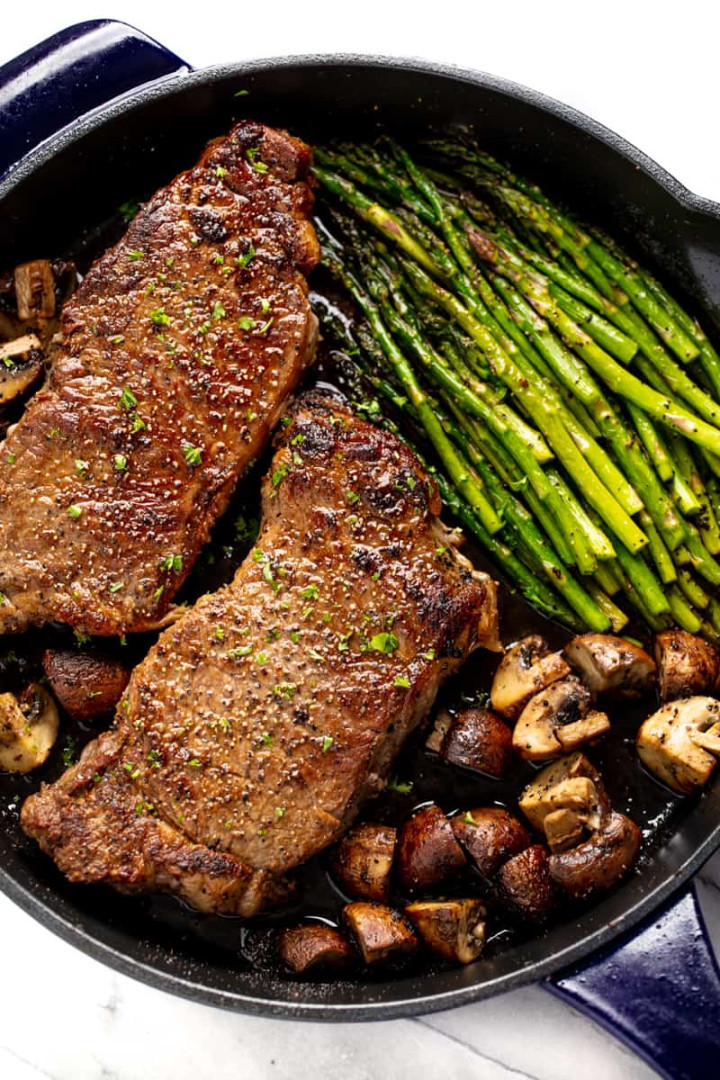A Culinary Journey
steak and asparagus, a classic pairing that has been enjoyed for centuries. But what if we could elevate this timeless duo to new heights, infusing it with flavors from around the world? This is the culinary adventure we embark on today, a journey that will take us through the heart of diverse cultures and culminate in a dish that is both familiar and extraordinary.
Ingredients:

Image Source: thestayathomechef.com
2 (12-ounce) boneless ribeye steaks, 1-inch thick
Preparation:
Total Time: 30 minutes
1. Prep the Steak: Season the steaks generously with salt and pepper. Heat a cast-iron skillet over high heat until very hot. Add the steaks and cook for 4-5 minutes per side for medium-rare. Remove from the pan and let rest for 5 minutes.
2. Prepare the Asparagus: While the steak rests, bring a pot of salted water to a boil. Add the asparagus and cook for 2-3 minutes, or until tender-crisp. Drain and set aside.
3. Create the Sauce: In the same skillet used for the steak, add the olive oil, garlic, thyme, and red pepper flakes. Cook for 30 seconds, or until fragrant. Stir in the balsamic vinegar, honey, and Dijon mustard. Bring to a simmer and cook for 2-3 minutes, or until the sauce thickens slightly.
4. Plate the Dish: Place the cooked steak on a serving platter and top with the asparagus. Drizzle the balsamic glaze over the steak and asparagus.
A Fusion of Cultures
This dish is a testament to the power of culinary fusion, drawing inspiration from various cultural influences:
European Elegance: The classic pairing of steak and asparagus is a staple in European cuisine, particularly in France and Italy.
By blending these diverse culinary traditions, we create a dish that is both comforting and exciting, a symphony of flavors that dances on the palate.
As we savor this culinary masterpiece, let us appreciate the rich tapestry of cultures that have contributed to its creation. It is a reminder that food is more than just sustenance; it is a language that transcends borders and connects us all.